|Australia home|
|Sydney, Blue Mts|
|Fraser Island|
|diving Great Barrier Reef|
|Outback|
|Singapore|
Click on one of the links above (or in the map)
for more details on any particular area we visited. On this
page, you'll find the following (links within this page):
Description of our visit to Litchfield NP.
Description of our visit to Kakadu NP.
Jumping crocodile boat trip.
Where we stayed, caravan parks.
Photographs - a little larger than
the ones you see in the description of the trip. (I put the
photographs at the end of this page, so they'll load as you read.)
Description of our visit to the Top End
Sunday, september 15th, 2002.
We went into Litchfield National Park today, and were at the Magnetic Mounds just in time for a fascinating ranger talk on
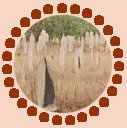 termites. The magnetic termite mounds are all oriented in the same way, so that a field full of these mounds sort of resembles a graveyard. From what I understood, the mounds are built this way in order to keep them at a relatively constant temperature of roughly 30 oC. Due to their north-south orientation, the early morning and late afternoon sun shines onto their wide and flat sides, while the hot midday sun shines onto the narrow knife-edge. Neat. Another type of termite mound is the Cathedral mound, which has a much more irregular structure, but achieves the same purpose.
termites. The magnetic termite mounds are all oriented in the same way, so that a field full of these mounds sort of resembles a graveyard. From what I understood, the mounds are built this way in order to keep them at a relatively constant temperature of roughly 30 oC. Due to their north-south orientation, the early morning and late afternoon sun shines onto their wide and flat sides, while the hot midday sun shines onto the narrow knife-edge. Neat. Another type of termite mound is the Cathedral mound, which has a much more irregular structure, but achieves the same purpose.
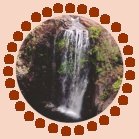 The temperature was rising to disconcertingly high levels (we're not used to this), so we decided to go for a swim at Florence Falls. The water was wonderfully cool here, and it was a lot of fun to splash about with the waterfalls coming down on top of our heads. We then drove on to Wangi Falls, for another swim.
The temperature was rising to disconcertingly high levels (we're not used to this), so we decided to go for a swim at Florence Falls. The water was wonderfully cool here, and it was a lot of fun to splash about with the waterfalls coming down on top of our heads. We then drove on to Wangi Falls, for another swim.
The waterfalls are beautiful, and swimming was a lot of fun; to be honest, though, swimming was more like a necessity than merely fun. Walking around in the park, sweat, sun-tan lotion, and insect repellent all mixed to form a disgusting, sticky
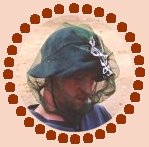 layer on our skin in no time, and yet this did not deter the flies. The flies, my god. I won't kid you, they were nasty. At any random daytime moment, in Litchfield, we'd have about twenty flies on our bare legs, and maybe thirty on our backs - I am serious. Now that wasn't even a problem, but there were also constantly ten or twenty flies trying to get to the "apertures" in our heads. They tried to crawl into our ears, into our nostrils, and sucked at the moisture in the corners of our eyes. And they were so horribly persistent. There'd be a fly at the corner of my mouth, I'd wave my hand to chase it away, and it would fly a tight little parabola and land at the other corner of my mouth. We bought insect nets for over our heads, and these did help considerably, but the only way to be completely free of the flies was while swimming. We camped at Wangi Falls.
layer on our skin in no time, and yet this did not deter the flies. The flies, my god. I won't kid you, they were nasty. At any random daytime moment, in Litchfield, we'd have about twenty flies on our bare legs, and maybe thirty on our backs - I am serious. Now that wasn't even a problem, but there were also constantly ten or twenty flies trying to get to the "apertures" in our heads. They tried to crawl into our ears, into our nostrils, and sucked at the moisture in the corners of our eyes. And they were so horribly persistent. There'd be a fly at the corner of my mouth, I'd wave my hand to chase it away, and it would fly a tight little parabola and land at the other corner of my mouth. We bought insect nets for over our heads, and these did help considerably, but the only way to be completely free of the flies was while swimming. We camped at Wangi Falls.
Monday, september 16th, 2002.
Last night, around sunset, the flies had all disappeared, only to be replaced almost immediately by clouds of mosquitoes.
 Then, when we got up in the morning, the flies were back. We ate breakfast in the campervan, with the doors closed (as did most of the other people on the campground), and then drove out of there. The flies won.
Then, when we got up in the morning, the flies were back. We ate breakfast in the campervan, with the doors closed (as did most of the other people on the campground), and then drove out of there. The flies won.
We drove to the Territory Wildlife Park, in Berry Springs, just north of Litchfield. Luckily, there were very few flies here, and we enjoyed the park very much. It has a large variety of Australian animals, many of which are not confined to the park; this just happens to be their natural environment. We camped at a nearby campground.
Tuesday, september 17th, 2002.
We drove toward the north east today. First we did some shopping in Humpty Doo (I just had to mention that because I like
 the name of the village so much!). We then drove to the Window on the Wetlands Visitor Centre. The wetlands looked a little dry to us at this time of year - it's the end of the dry season - but the visitor centre expositions are excellent, and we got a good impression of the effect of the seasons on wildlife.
the name of the village so much!). We then drove to the Window on the Wetlands Visitor Centre. The wetlands looked a little dry to us at this time of year - it's the end of the dry season - but the visitor centre expositions are excellent, and we got a good impression of the effect of the seasons on wildlife.
A few hours later, we found ourselves on a boat moving up the Adelaide River, for a Spectacular Jumping Crocodiles tour. And yes, it really was spectacular. The guides would spot a crocodile in the river or on the river bank,
and tie a piece of raw meat to a length of string dangling off a pole. The croc would then swim over to the boat, and jump out of the water to get at the meat. They were always rewarded with the meat after three tries. I think we saw ten
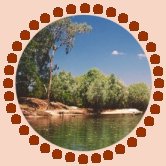 different crocodiles, ranging from huge, dark, old crocodiles to a hyper-active young one that jumped so eagerly that even its rear paws came out of the water! I had mixed feelings about this routine. On the one hand, the crocs really are wild, and they live in the river, and it's great to get a look at them. On the other hand, they're sort of "trained" into this jumping routine, they recognize the boat and the meat, so that makes it unnatural.
different crocodiles, ranging from huge, dark, old crocodiles to a hyper-active young one that jumped so eagerly that even its rear paws came out of the water! I had mixed feelings about this routine. On the one hand, the crocs really are wild, and they live in the river, and it's great to get a look at them. On the other hand, they're sort of "trained" into this jumping routine, they recognize the boat and the meat, so that makes it unnatural.
We spent the night in Annaburroo.
Wednesday, september 18th, 2002.
Just inside Kakadu National Park, we stopped at the Bowali Visitor Centre for another excellent exhibition. We then drove
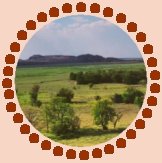 on to Ubirr, where we took a cruise on the East Alligator River. There were about twenty of us tourists in the little boat, and an Aborigine guide took us down the river, stopping to tell us about Aboriginal culture and practice along the way. I particularly liked the spectacular sights along the bright green river. You don't want to swim there though, there are crocodiles all over the place.
on to Ubirr, where we took a cruise on the East Alligator River. There were about twenty of us tourists in the little boat, and an Aborigine guide took us down the river, stopping to tell us about Aboriginal culture and practice along the way. I particularly liked the spectacular sights along the bright green river. You don't want to swim there though, there are crocodiles all over the place.
We also took a look at the Aboriginal art at Ubirr. It's very well preserved, as the Aborigines have always kept up the quality of the paintings by repainting them when they start to fade. The paintings vary from tens of thousands of years old, to a few hundred years.
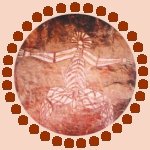
We spent the night at a caravan park in Jabiru, in the middle of Kakadu NP. It was hot and sticky, and we're not used to it yet, so we spent most of the evening just sitting next to the campervan, surrounded by mozzie coils (burning coils whose smoke is supposed to repel mosquitoes), sweating and swatting away.
Thursday, september 19th, 2002.
At Nourlangie Rock, we just happened to run into a few rangers who were explaining all kinds of ways in which the Aborigines used natural items as tools, such as knives, bags, and methods to carry fire over long distances. This was
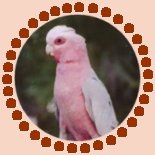 interesting. Apart from that, the Aborigine art at Nourlangie is similar to that at Ubirr, and I think we saw enough of these drawings to last for a while.
interesting. Apart from that, the Aborigine art at Nourlangie is similar to that at Ubirr, and I think we saw enough of these drawings to last for a while.
We had planned to picnic take a walk at Anbangbang Billabong, but there were just so many flies that we ate inside the campervan and then got out of there. After a quick visit to Kakadu's other Visitor Centre (Pig-Nosed Turtle, I believe), we were really fed up with the heat and the flies, and we returned to the caravan park and spent the rest of the afternoon hanging out by the pool.
Friday, september 20th, 2002.
Today we drove over to Darwin, and spent some time walking around the center of time. The city itself is not that spectacular, but there are an awful lot of very odd-looking people; they're definitely more interesting than the buildings.
Saturday, september 21st, 2002.
Today, we flew to Singapore for a three-day stopover. See the Singapore page for details!
Where we stayed
Batchelor: Caravillage Caravan Park - good
Litchfield NP: Wangi Falls campground - basic
Berry Springs: The Lakes Caravan Park - good, with pool and friendly staff
Annaburroo: Bark Hut Inn & Caravan Park - good, with pool
Kakadu NP: Aurora Caravan Park in Jabiru - good, with pool
Darwin: Shady Glen Caravan Park - good, don't remember whether there was a pool
(there probably was)
Photographs of Australia's
Top End
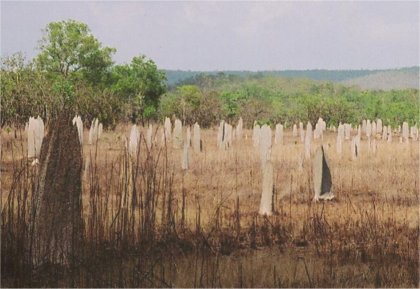
"Magnetic" termite mounds, in Litchfield National Park.
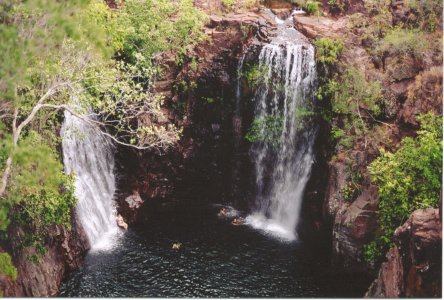
Florence Falls, in Litchfield.

You're gonna need this: "Great Aussie Flynet, protection from
all insects"!

"Cathedral" termite mounds, in Litchfield.

"Spectacular jumping crocodiles" on the Adelaide River...
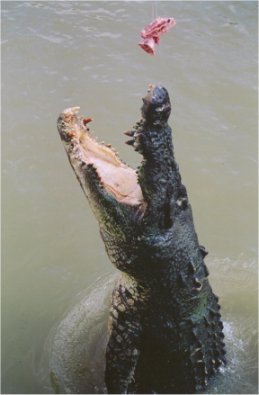
... and another jumping crocodile.

A crocodile resting on the banks of the river.
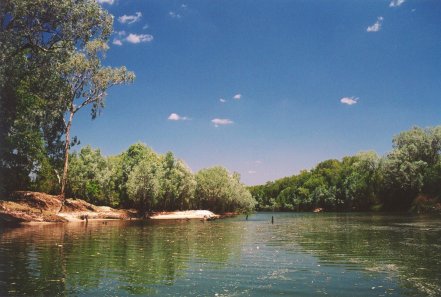
East Alligator River.
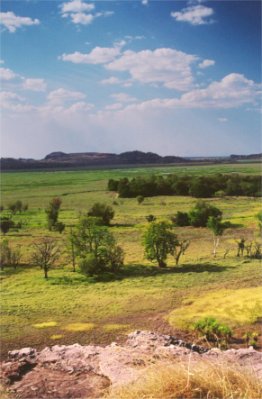
The landscape near Ubirr.
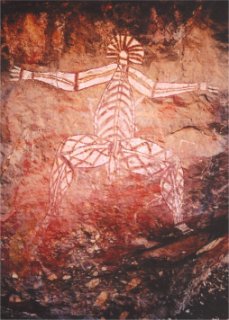
Ancient Aborignal art.
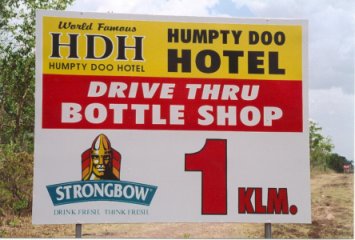
Humpty Doo Hotel and bottle shop.

This parrot is known as a Galah, Rose-breasted Cockatoo,
Roseate Cockatoo, or Willock Cockatoo.

I think these are Red-collared Lorikeets, one of the
types of Rainbow Lorikeets.
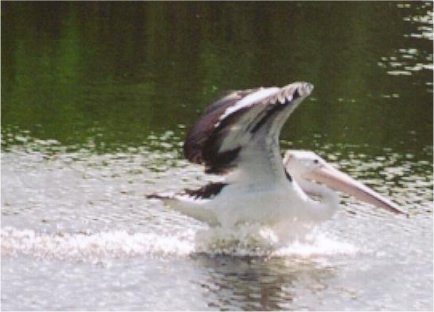
More of the tropical Top End wildlife. I'm sorry, I don't
know exactly what this is. I also don't know the names of
the next few birds; if you do, please send me an
email through my home page.
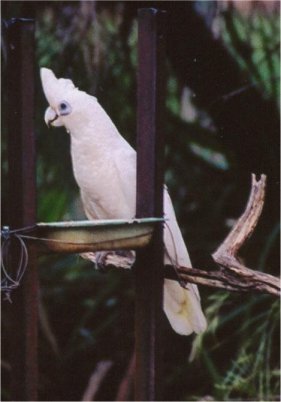
... and more...

... and more...

... and more...
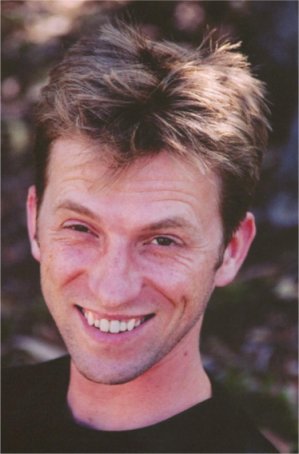
More wildlife, although this one isn't native.
|Judith home|
|Canada|
|Portugal & Spain|
|Sweden|
|Nepal|
|cycling Holland to Spain|
|
email me|
|


